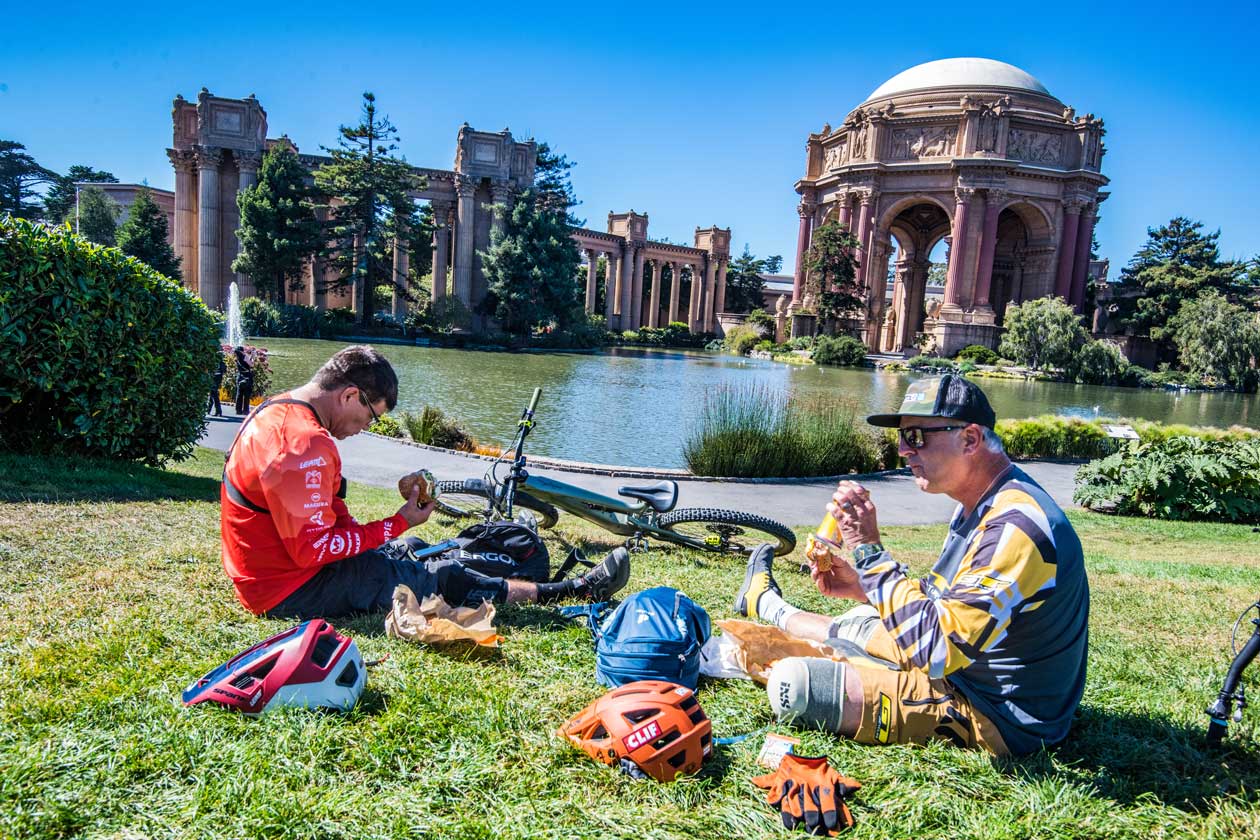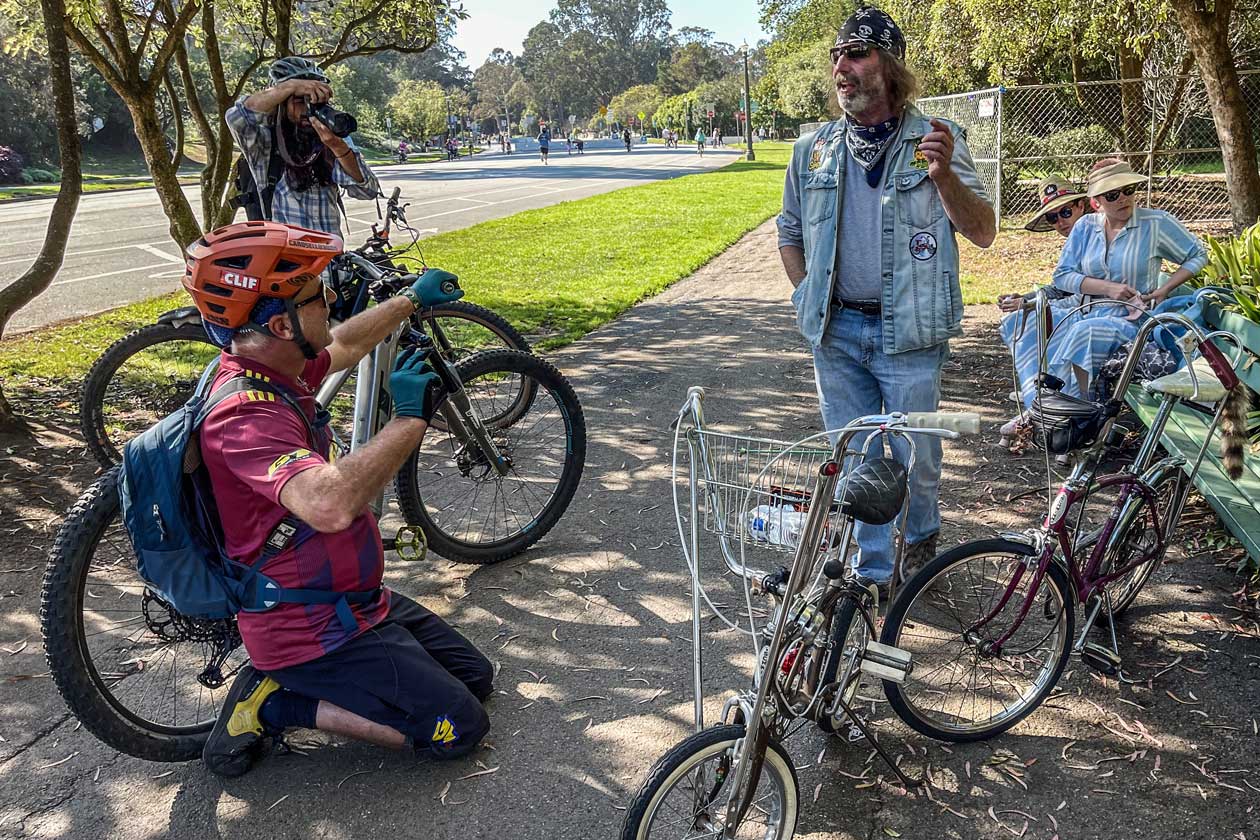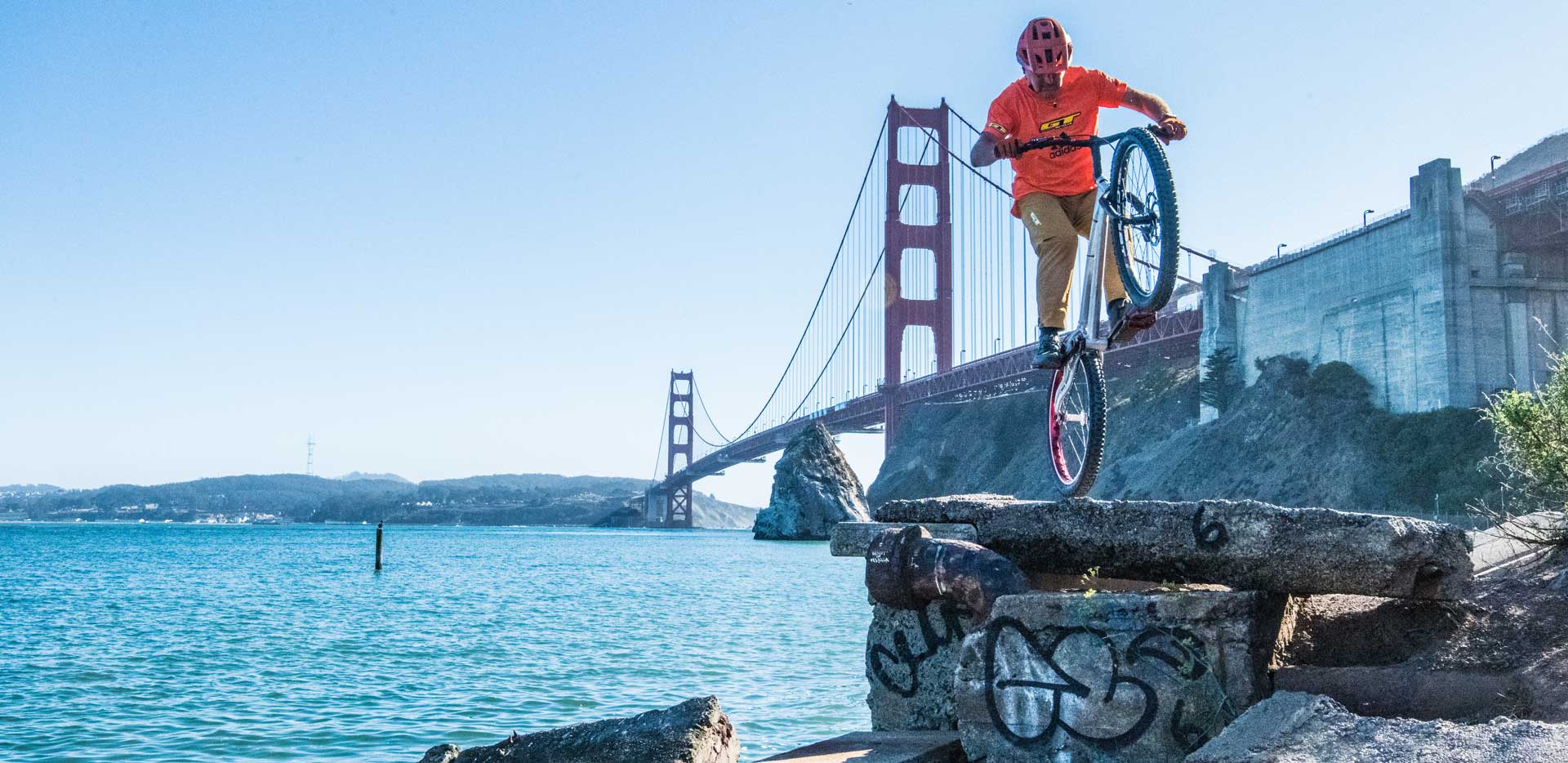
RIDE AND INTERVIEW
HANS REY – LIVING LEGEND
Presented by SR Suntour
Words by Drew Rohde / Photos by Carmen Rey
Chances are, if you’ve been a mountain bike fan in the last 3 decades you know the name Hans “No Way” Rey. He doesn’t just have one of the longest careers in mountain biking, it’s dang near the longest in the entire action sports world! For 35 years now Hans has been riding through life, likely on one wheel almost as much as two, and his adventures have taken him around the world. He’s now creating content and has a more charitable side with his Wheels 4 Life foundation, which you can learn more about and help at the bottom. Come along for a ride up one of the most challenging climb trails I’ve ever ridden, as we interview and sweat in the Bentonville, Arkansas heat in this installment of Living Legends.
The Loam Wolf (TLW): Not to date myself here but I remember watching you perform at World Cup DH races at Snow Summit in the mid 90’s as a kid, and seeing you drop crazy Trek Y-Bikes with Spingery wheels off the Santa Monica Pier in the T.V. show Pacific Blue. You’ve probably been at this whole sponsored athlete thing longer than anyone in mountain biking, and likely many other action sport disciplines.
When you reflect back on your lifetime and career, what things stand out most to you?
Hans Rey (HR): Yes indeed, it is my 35th year as a professional rider, and I’m lucky to have been with GT Bicycles my entire pro career, since I arrived in America in 1987. It has been beyond my wildest dreams what has happened and is still happening. I always thought I would do this for a couple of years and then get on with a real job. I was fortunate I was at the right time at the right place, being introduced to the right people, but also grabbing opportunities and running with them. It’s hard to define what stands out most, there are hundreds of moments, events, people and places. I think being able to make your hobby your career and inspire others along the way – is perhaps the single most outstanding outcome. Travel was always a big incentive for me – I always wanted to see the world. I’m at 70-plus countries and counting.
TLW: You’ve certainly had some amazing photos bouncing on one wheel or styling out a back wheel hop all around the globe. Pick a location or stunt that was…
…The most memorable?
HR: One of my favorites was riding the Cliffs of Moher in Ireland – those photos still give goosebumps as we (Steve Peat and I) rode along the narrow edge 600 feet above the coastline.
TLW: …The most beautiful?
HR: Might be the photos in front of Corcovado (Christ statue) in Rio – what a special morning it was.
TLW: …The one that scared the heck out of you?
HR: Perhaps when I rode on the hot lava on an active volcano in Hawaii for a crazy German film maker. He called it the ‘dance on the volcano’ as I hopped on the brand-new ground on the edge where lava was flowing into the boiling ocean. Red hot rocks were exploding and flying through the air. I protected myself with 3 layers of jackets. It was all filmed at night with my silhouette against the red lit steam from the boiling ocean water. Lesson learned, don’t mess with Mother Nature.
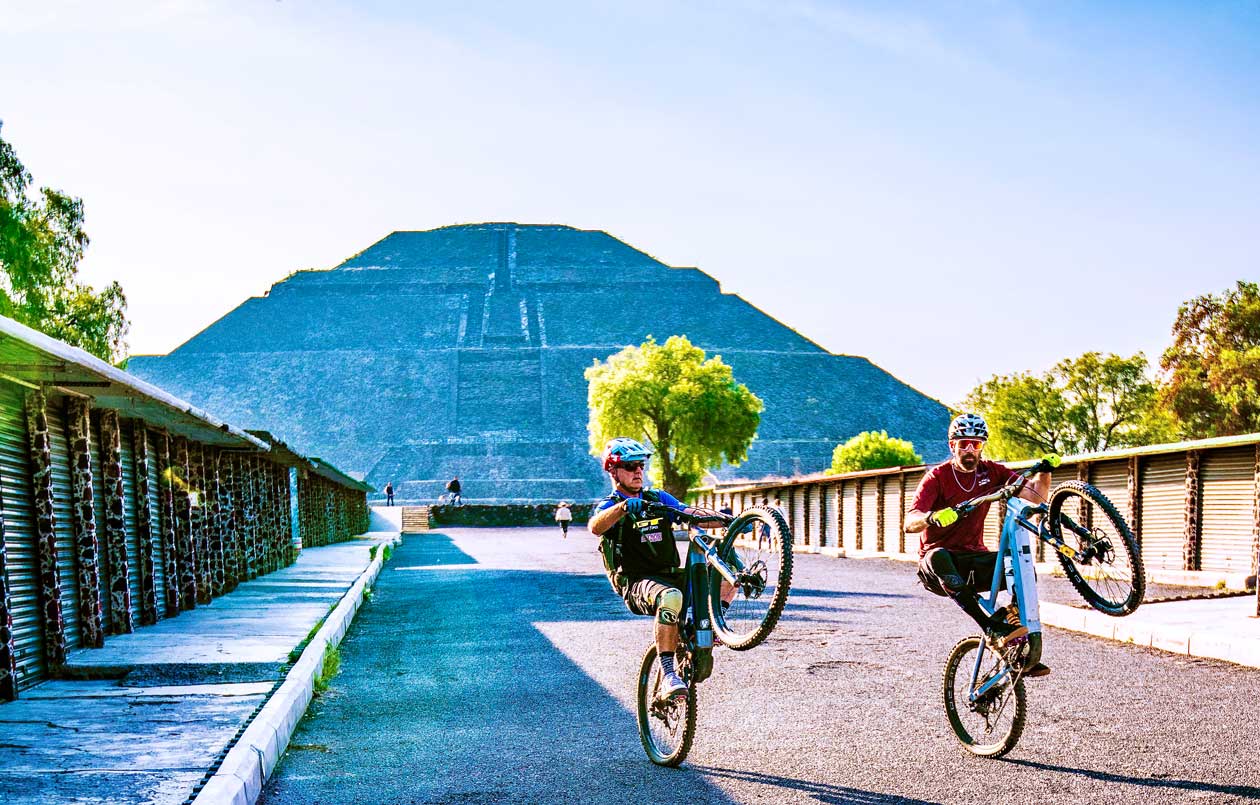
TLW: Now that you’re not traveling for trials shows or freeride video projects, what do you spend your time doing on the bike these days?
HR: I’m still very busy with all sorts of projects and sponsor obligations. I’m still filming videos and content on a regular basis. I’ve been doing my adventure trips now for over 25 years, we filmed in many remote corners of the world and these documentary films have been seen all over the world. Lately I’ve found a new passion in my Urban Adventure trips. Instead of going to the most remote places, I find big cities that are surrounded by incredible nature – it’s all about contrasts from nature and harmony to chaos and concrete jungles – all mixed with people, history, culture, landmarks as well as little known places in those metropolises. We (myself, guest riders and crew) usually do 5 day traverses with MTB and also eMTB’s. We always make films and produce stories that are distributed worldwide to all sorts of media, from TV, Streaming platforms, online, airlines, etc.… and of course they can be found on my YouTube channel along with many other projects from the past to the present. TransAngeles (w. Missy and Timmy C.), TransNapoli, TransHongKong (w. Martin Maes), Slay the Bay S.F. (w Brett Tippie, Goldstone and Klunkers), and just last week we filmed ‘Gritty in Mexico City’ (w. Rob Warner).
Besides that, I also work on smaller projects, photoshoots, consulting and sponsor obligations at events, I’ve been working on various advocacy projects including my own charity Wheels 4 Life, Talk Tours, etc.…
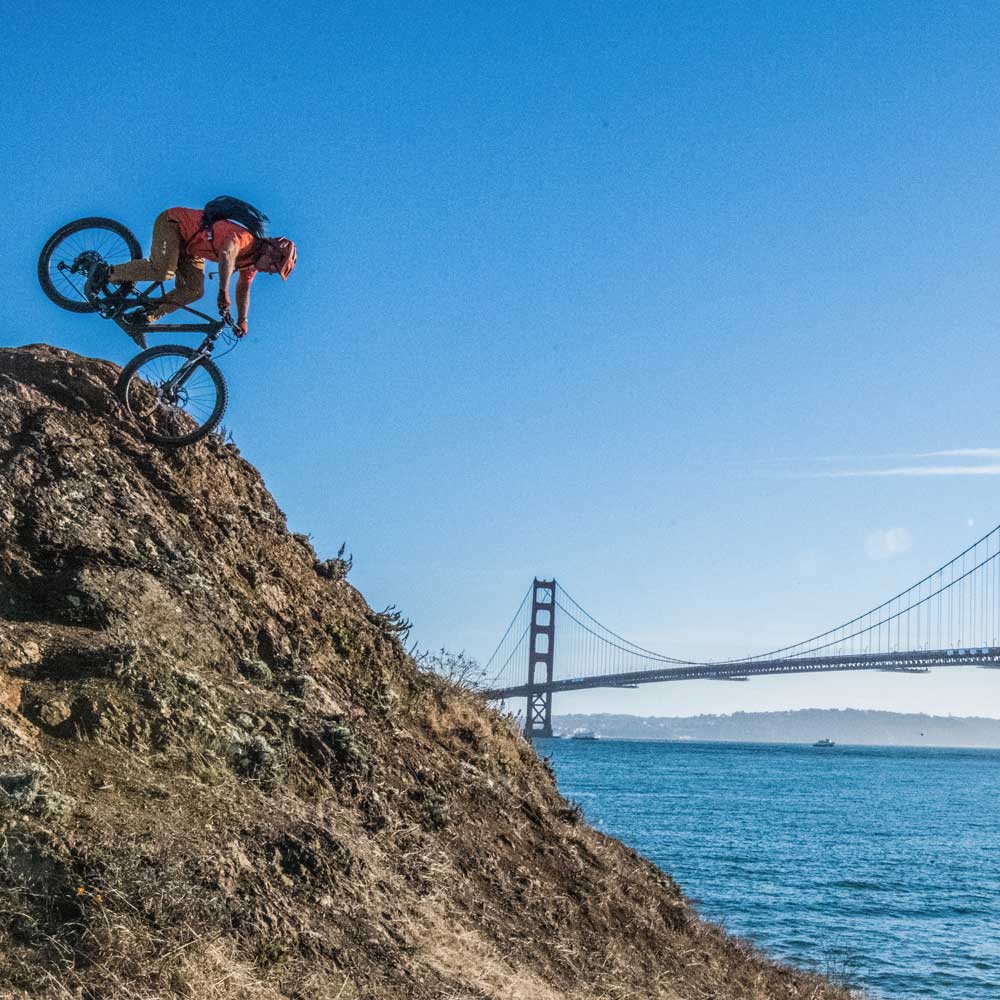 TLW: So, you’ve certainly evolved over the years as a sponsored rider, but Trials has been your most successful discipline and the one that you dominated for many years, correct? Tell us about how you got started in Trials riding, and what drew you to that discipline.
TLW: So, you’ve certainly evolved over the years as a sponsored rider, but Trials has been your most successful discipline and the one that you dominated for many years, correct? Tell us about how you got started in Trials riding, and what drew you to that discipline.
HR: Yes, Trials was my roots and beginning and how I made myself a name (including the No Way nickname). But I also embraced all sorts of riding styles and even raced DH and DS for a while. Through my trial’s skills, my early videos before anybody else did, my influence from the Laguna Rads and other extreme sports lead me into the direction of ‘Extreme Mountain Biking’, that’s what I called ‘Freeride’ before the word was coined (or adopted to Mountain Biking). I grew up in Germany, that’s how I got into trials – initially I wanted a motorcycle, but me and my buddies started riding converted stingrays imitating the motos. We weren’t the first, other kids in Germany, Spain, England, etc.… had the same idea. Bicycle Trials was a European sport, unlike MTB or BMX. I was in the top ten in the Euro competitions throughout the eighties on 20-inch trials bikes. When I turned 18, I thought it was time to retire from the sport (it was a pure amateur sport) and get on with life (university). That’s when an American Trials rider named Kevin Norton told me that there was a new sport in America, it was called Mountain Biking and they would always have a trials competition (mainly on 26inch bikes) as part of the early MTB Stage races. He thought it would be a good idea to come over and show Americans what real trials riding was. So, I requested a sabbatical semester at my university to come to America and thought it would be a great way to end my trials career. Little did I realize that my ‘career’ hadn’t even started yet. I never went back.
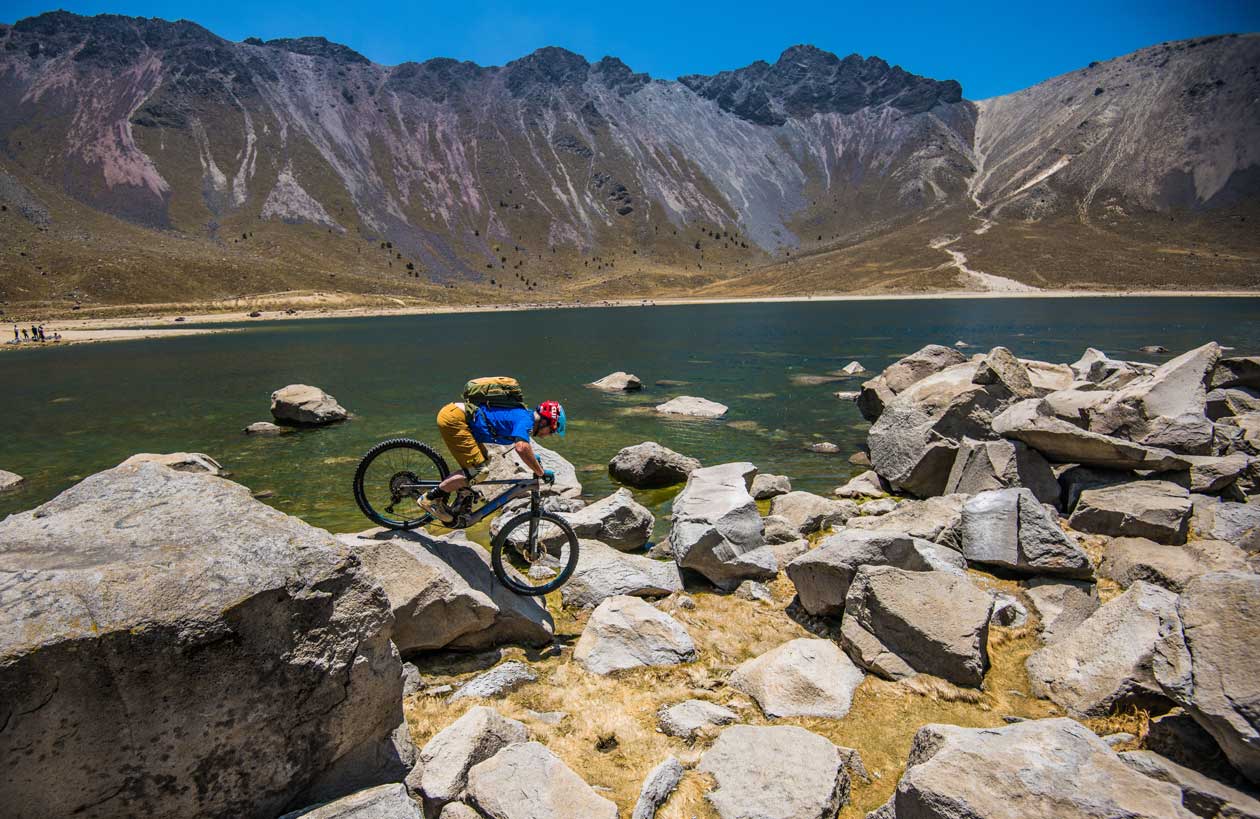
TLW: What do you think about the current state of Trials riding and why do you think it is where it is?
HR: Trials was always a side show with a special breed of riders. It is a very difficult discipline that’s why the sport has never gone mainstream. Many of the most recognized mountain bikers in the world all share a trials background.
The competition scene and level of riding is beyond imagination. I suggest you google some recent trials competition footage – it is really amazing. On top of that, guys like Danny MacAskill made street trials riding a popular thing.
I also see potential for a form of trials riding with eBikes, I’m not talking about hopping on the back wheel over obstacles, more like riding very technical terrain – I love doing technical climbs on eBikes.
TLW: Do you still ride Trials or just incorporate those skills into your trail riding and urban riding moves?
HR: I still ride some trials, but usually just once a week. It doesn’t get easier with age. I still love riding technical mountain bike trails where I can benefit from my trials skills and as I said already, I love technical ebike sections (I call it old school trials, without stopping and not much hopping.).
TLW: Speaking of urban riding. You’ve become quite a diversified ambassador, not only for your sponsors but for our sport. Share with us some of the projects you’ve been involved in recently and what your goals are.
HR: I think I already answered that question above when I wrote about my Urban Adventures.
What I can add here is that it was a natural evolution for me, and it fits the time and where the sport is nowadays. Mountain Biking has so many subcultures and that is one of the great things about it – it is also amazing what technology and the infrastructure (mainly purpose-built trails, destinations and bike parks) for biking has become. It’s a great time to be a mountain biker.
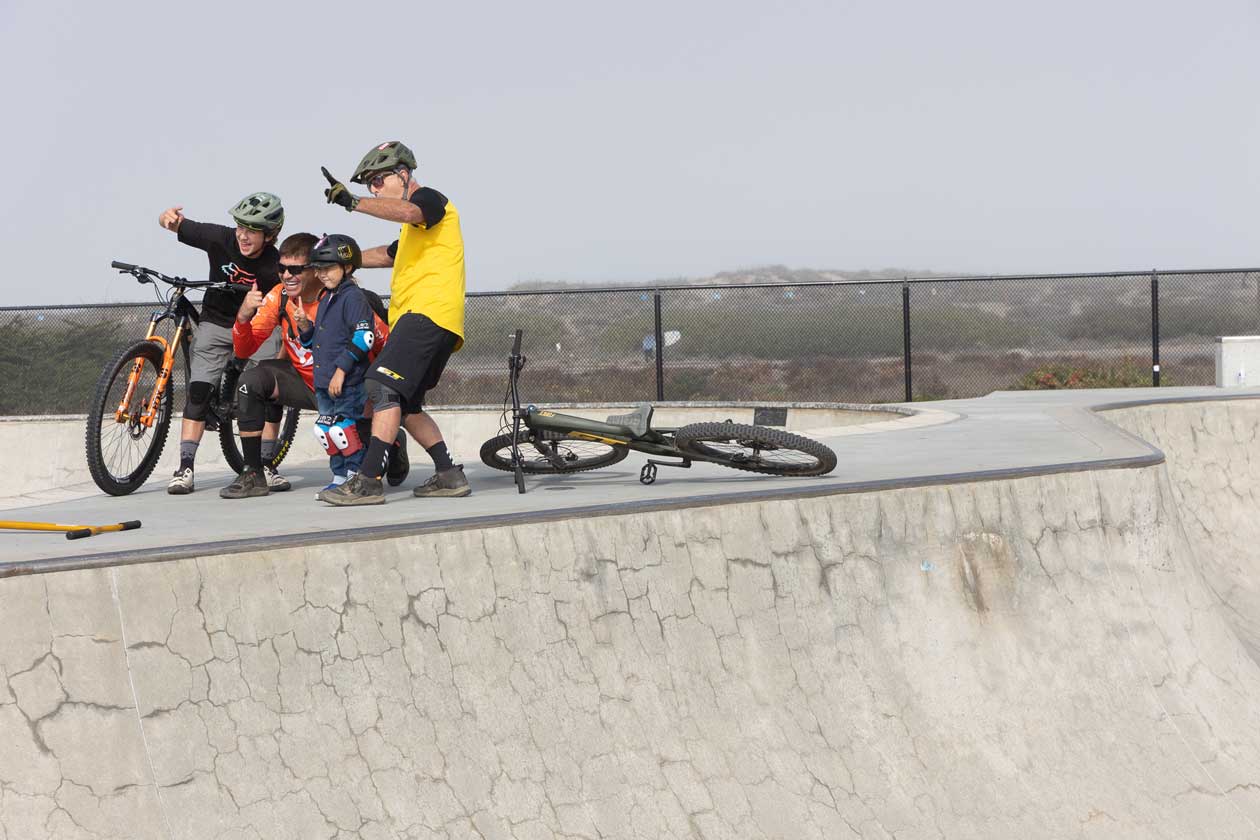
TLW: How has Wheels 4 Life grown and affected both you and those who’ve received help from your foundation?
HR: I started Wheels 4 Life with my wife Carmen in 2005. We are still the two people who do all day-to-day work (100% voluntarily). W4L is a non-profit charity that donates bicycles to people in need of transportation in developing countries. To date we have donated over 15,000 bikes in over 30 countries. Our main target democracy are school children (who often must walk for miles to school), but we also support health care workers and educators, as well as farmers and entrepreneurs who can make a living thanks to the access to a bike or to bring their goods to market.
Sometimes it can really be a life changing story, when kids get education, that leads to university that leads to a proper job. But bikes often just make everyday life better, these people don’t have alternative modes of transport, they use the bikes for daily tasks, like fetching water, running errands, selling produce, etc.…
TLW: What is the Urban Adventure series all about and how many more stops do you have planned?
HR: See above – I try to do one Urban Adventure a year. These trips and routes are very difficult to plan – it’s a big effort to organize and execute them.
TLW: What do you think about the current state of mountain biking as a whole?
HR: I think it’s pretty cool, as mentioned before, we have so many ways to practice mountain biking – all these different subcultures offer a variety of forms, a far cry from the early days in the late 80ties when it was all one family, when we could tell the rider by just looking at a tire imprint in the dirt. Before riders would start to specialize in one discipline or another and before there were different bikes for each discipline. Before technology went ballistic and before anybody had expectations other than having a good time together.
I am glad I got to experience that side of mountain biking – but that only works for a while and only as long as the tribe stays small. Many things have changed but I often still see this original mountain biking spirit of going out in nature, riding with friends, pushing each other and having fun. Every era brings its own set of benefits and challenges. As much as the sport has evolved, we have to find ways to integrate all these new riders and take care of nature and the planet at the same time. It’s amazing to have all these subcultures and many of them have little to do with each other, other than two wheels.
“Nowadays, there is so much more to mountain biking than just racing, and that opens up possibilities.”
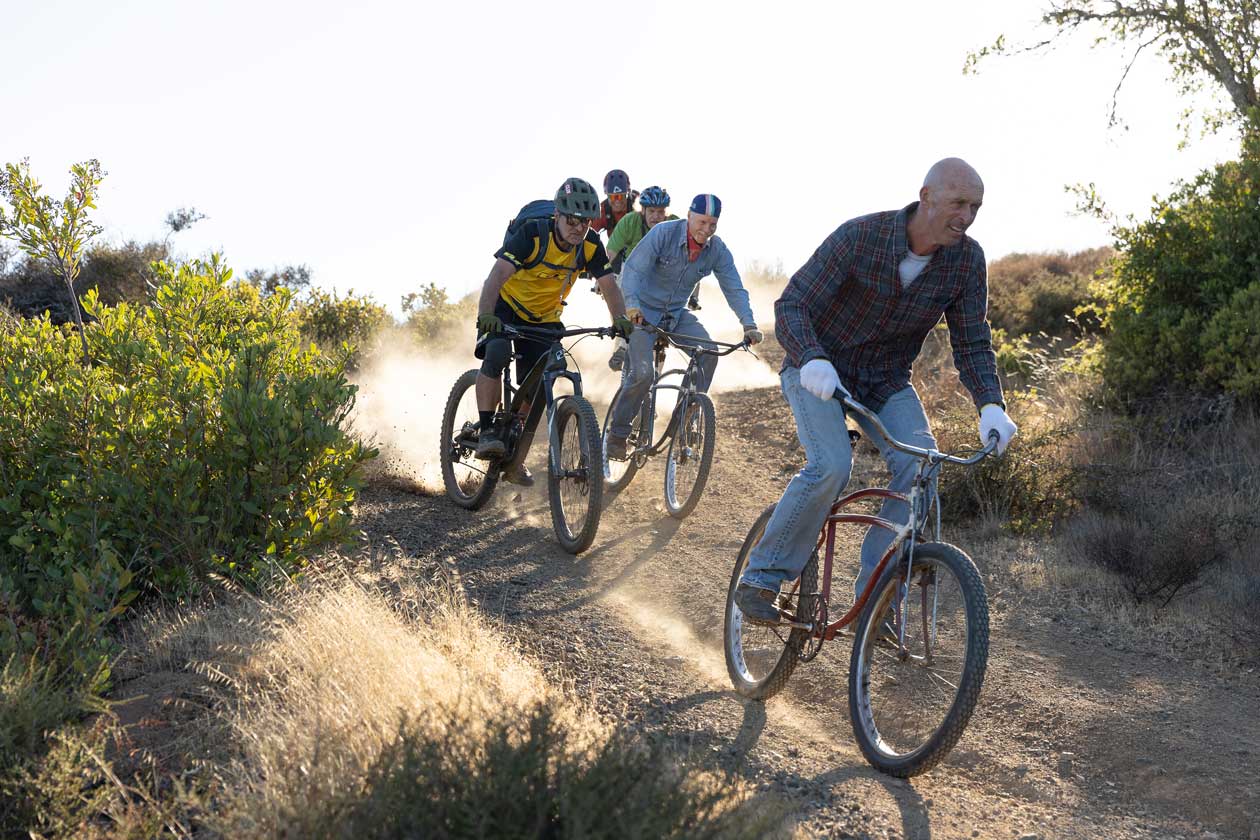
TLW: Over the decades of being deeply involved in this sport, what eras stand out to you as the best, craziest, or worst?
HR: Well, people often mention the ‘Golden Days’, early/mid-nineties when mountain biking blew up and became big and popular. But there were many other era’s that I cherish equally.
The racing scene was special then, but so were the days of extreme biking feats with my early photo/video projects; the Laguna Beach RADS; the early adventure trips; trials shows all over the world including Olympic Closing Ceremonies in Atlanta ’96; the first ever XGames (Extreme Games in 1995) had Trials and Slalom; TV, film and commercial appearances in Hollywood including Pacific Blue, etc… the early Freeride days, when that sport started taking shape with Northshore, Slopestyle contests, and other freeride subcultures.
Standout moments included working on Willy Bogner’s ‘Fire, Ice & Dynamite’ Motion Picture w Roger Moore and every extreme sport/ action sport athlete of the time. Summiting Mount Kenya and Mount Kilimanjaro back-to-back, and influencing riders to ride, push the limits further and to follow their dreams
TLW: What do you see for the future of mountain biking?
HR: I think it will grow and get bigger and bigger and sub-divided into more niches – for better or worse – only time can tell.
TLW: When you’re out riding, how often do you get recognized and what age are the riders that typically know who you are?
HR: That can vary a lot. I’m not a household name, which has its benefits, I’m content with my 15 minutes of fame, especially around bike events/places. But it’s nice to be a normal guy in-between.
Yes, usually it’s more people who grew up in my generation plus/minus 15 years that have a story to tell and remember me from the days, when I was the only person doing what thousands are doing now.
I can be at the most random places and people recognize me, but it’s not seldom that I walk in a bike shop, and nobody notices – especially when they are not expecting you. I walked up to the Adidas/Five Ten stand at Garda Bike Festival recently. The agency that was hired to run their booth had no idea who I was when I stopped by to say hello – they complimented me on all my Five Ten gear I was sporting, but they had no clue who I was and that I’ve been working with them for 29 years. Haha – it’s all relative. On the flip side, I had Paul Newman walk up to me once, complimenting me on my talent.
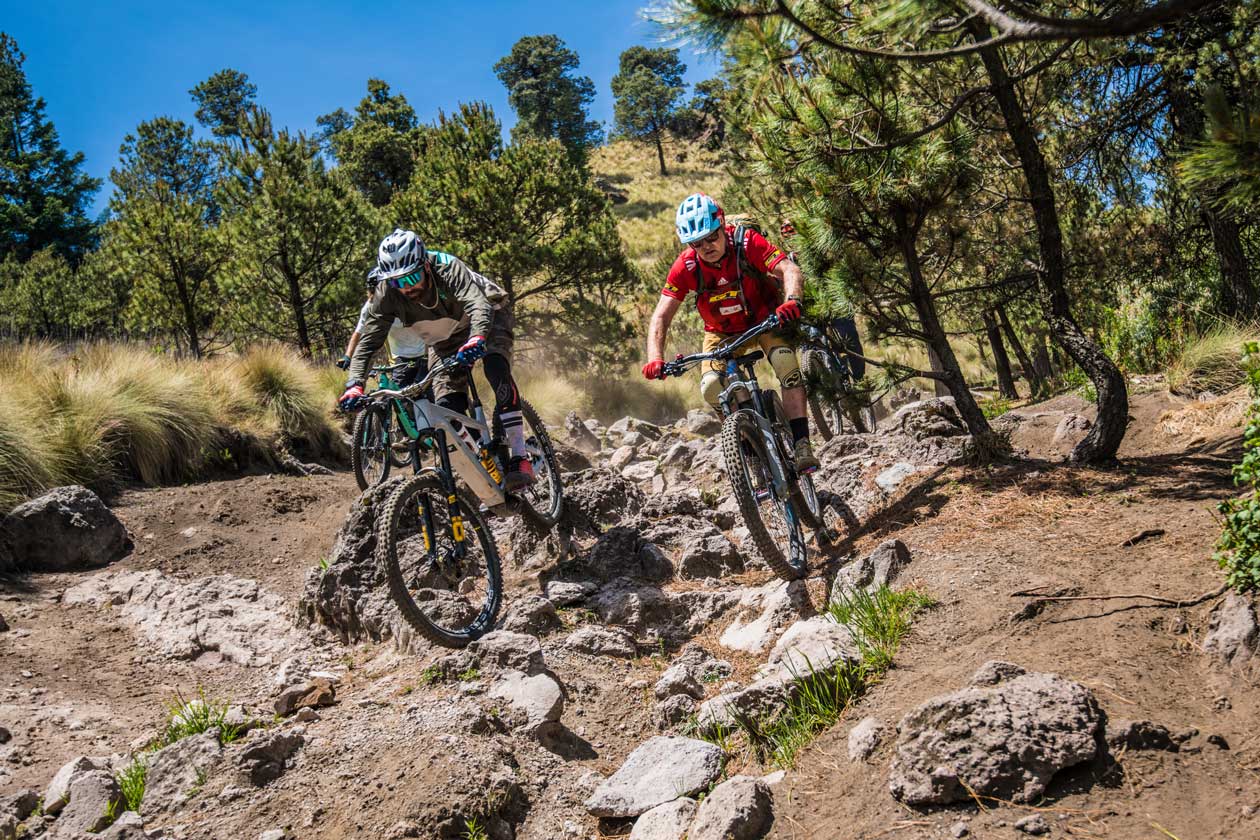
TLW: Do you ever encounter younger riders who don’t know who you are and then get their minds’ blown when you show ‘em some crazy skills?
HR: Yes, every variation of this has probably happened, and you cannot blame the young’ns for not knowing me. There are hundreds of riders out there, and thousands of amateur riders that now have a platform on social media to show their skills and many can do moves and tricks that I will never learn. That being said, I actually have a good number of young fans, my demographic goes from 2 year olds to 92 years old, it is also much more international and touches way more sub-cultures of our sport than your average influencer does. It can be fun to show off some skills, especially when people underestimate you.
 TLW: Conversely, do you ever see hikers or non-riders out in the wild who say, “You’re too old to be doing this stuff, you must be crazy!”?
TLW: Conversely, do you ever see hikers or non-riders out in the wild who say, “You’re too old to be doing this stuff, you must be crazy!”?
HR: I don’t know, it has happened, but usually people are used to older guys still being active and doing stuff our parents’ generation wouldn’t have done. I’m no longer out to prove myself and it’s fine if other riders outperform me on the trails – that’s just evolution and I enjoy watching the new generation taking it all to the next level. Often levels that I couldn’t have thought of in my wildest dreams of being possible. Respect to all the guys who’ve taken the sport to the next level.
TLW: What is your secret for people who want to ensure they can stay young and keep shredding and riding well all throughout their life?
HR: Keep doing it and find ways to have fun with it. I’ve always said, one has to keep throwing wood in the fire to keep it burning, that goes for career longevity as well as staying in shape.
TLW: Who are your favorite riders to watch these days and do any of them inspire you to try new things?
HR: I’m a fan of Danny MacAskill – he inspired me to keep going and push myself sometimes. It is nice to know that he found inspiration as a young kid in my videos – but it works both ways. I get inspired by so many riders, for various reasons. There are so many chargers out there, young and old.
TLW: Thank you Hans! It’s been awesome to watch all the years of awesome riding and history.
For those who want to help your charity, how and where can they do that?
Donations or fundraisers are most welcome.
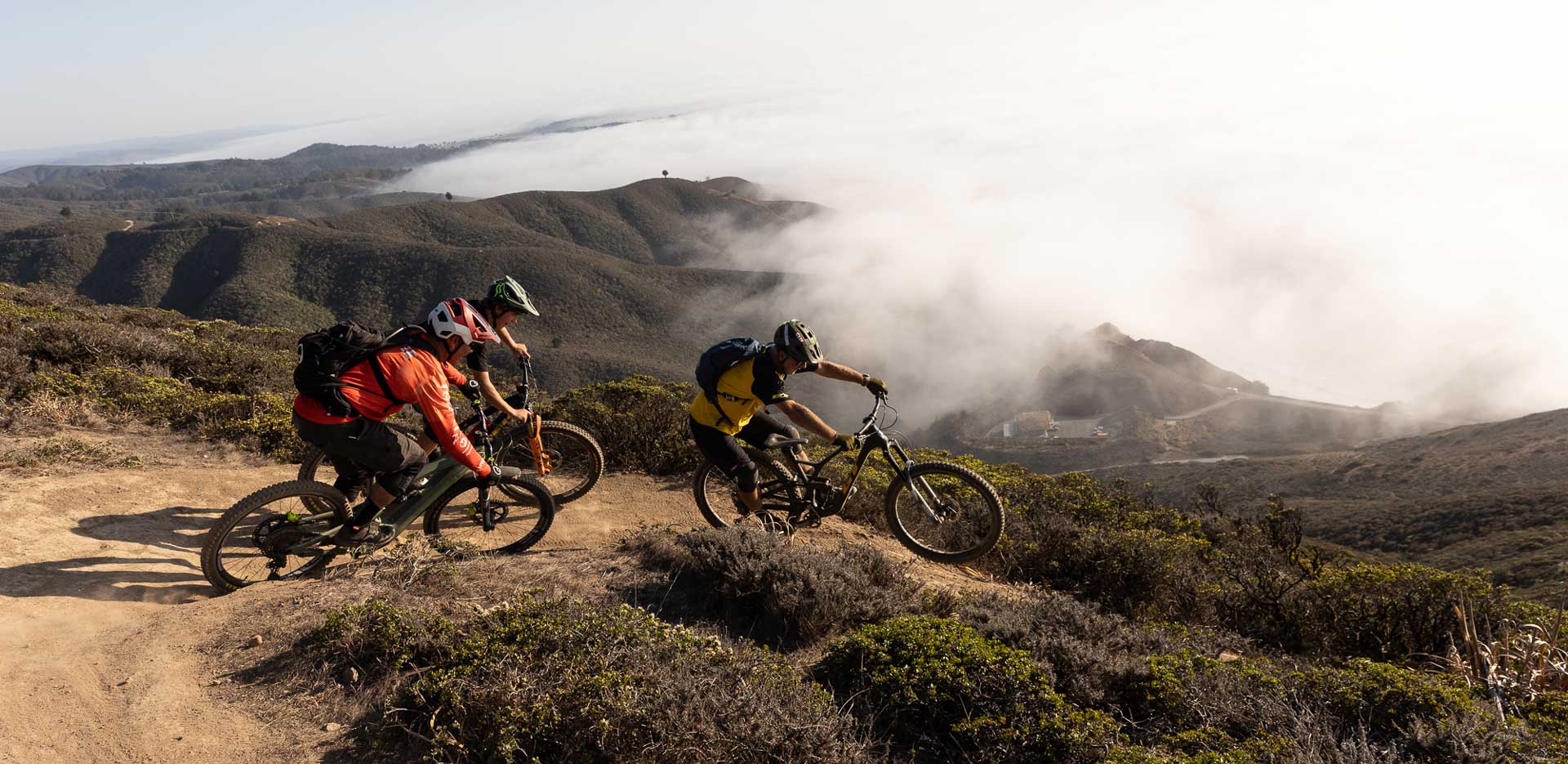
LEAVE A COMMENT, WIN FREE SWAG!
Want to win some free schwag? Leave a comment and vote up the most thoughtful comments and each month we’ll pick a winner. The person with the smartest and most helpful replies will earn some sweet new gear. Join the Pack and get the latest news and read the latest reviews on the top mountain and electric mountain bikes.

